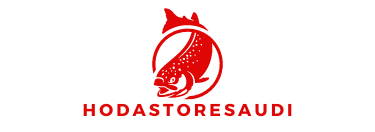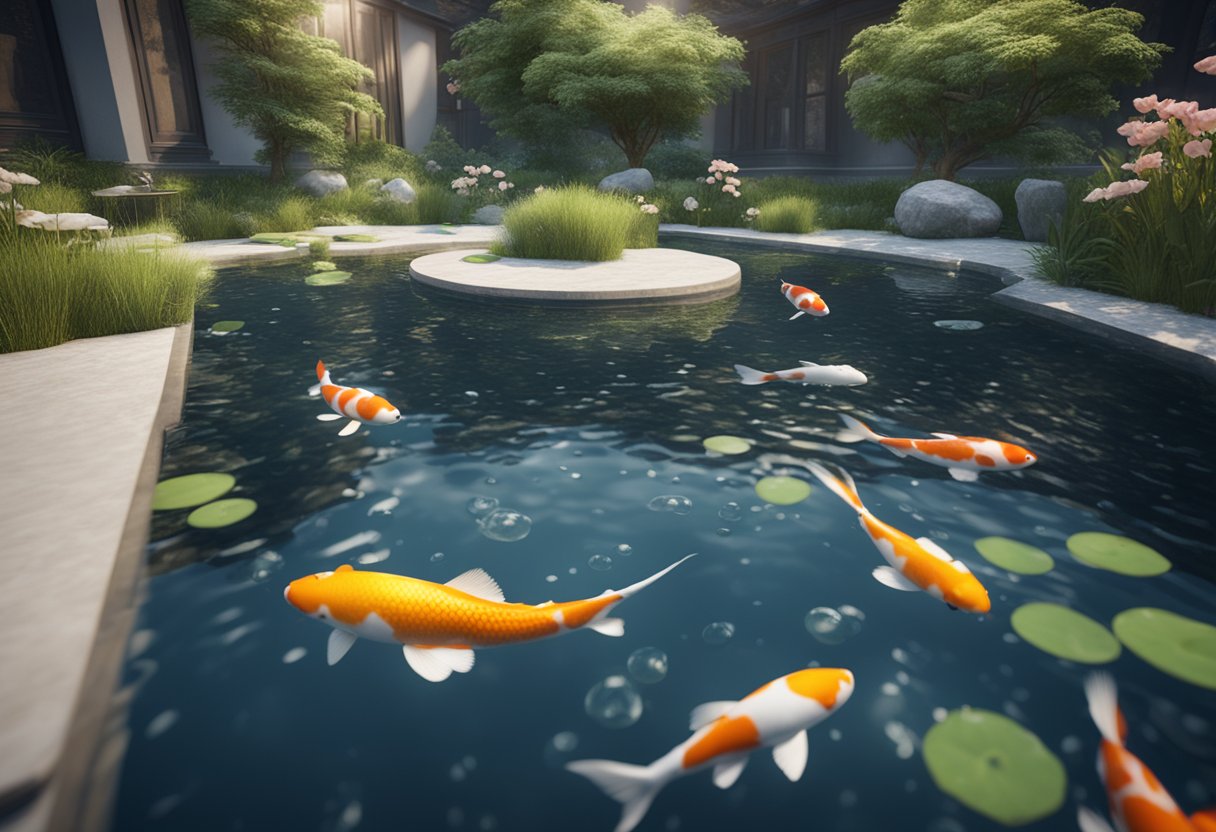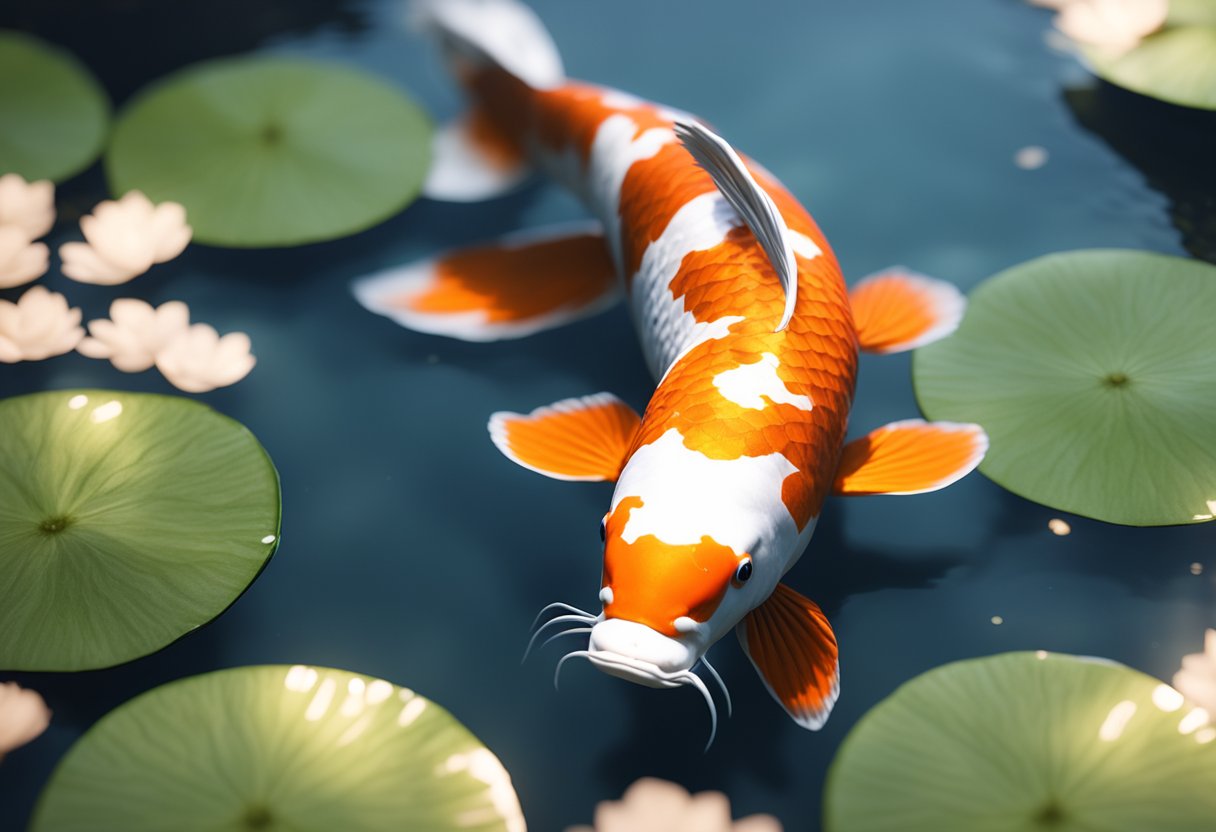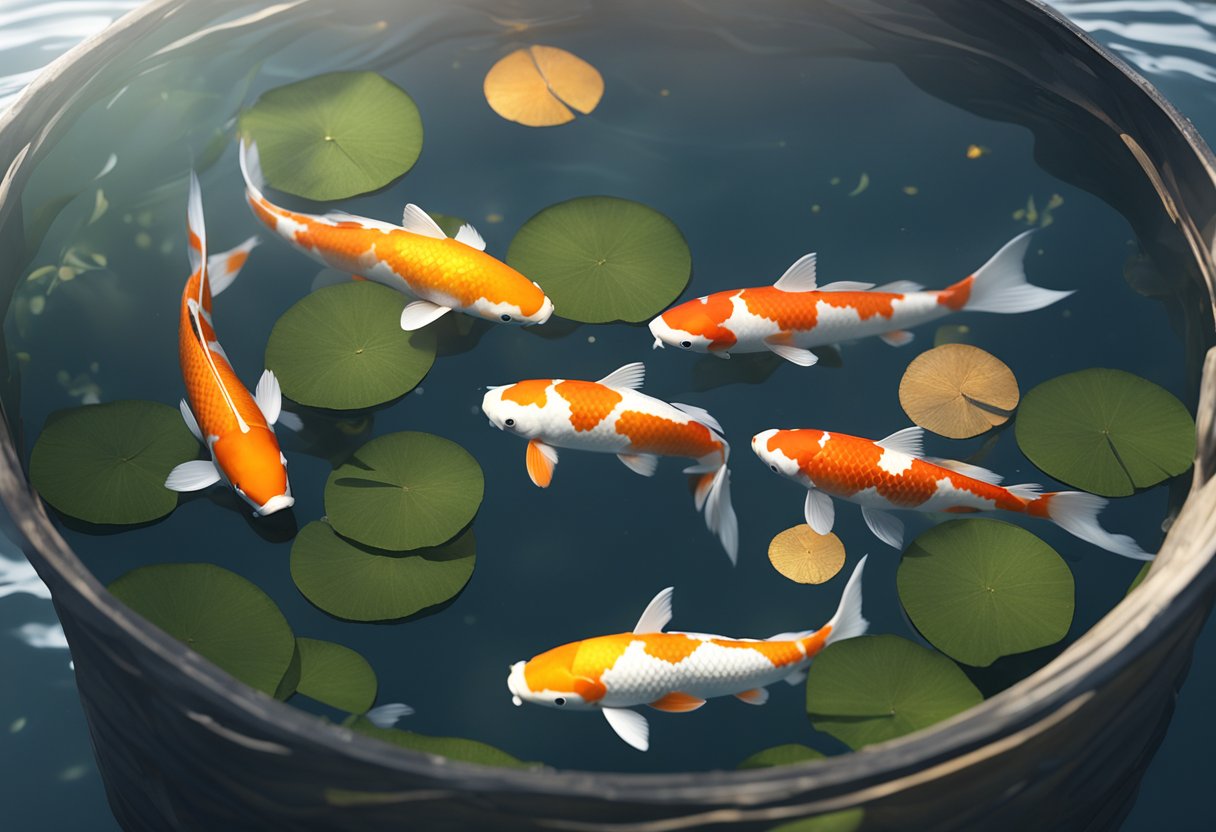Essential Tips for Koi Disease Prevention
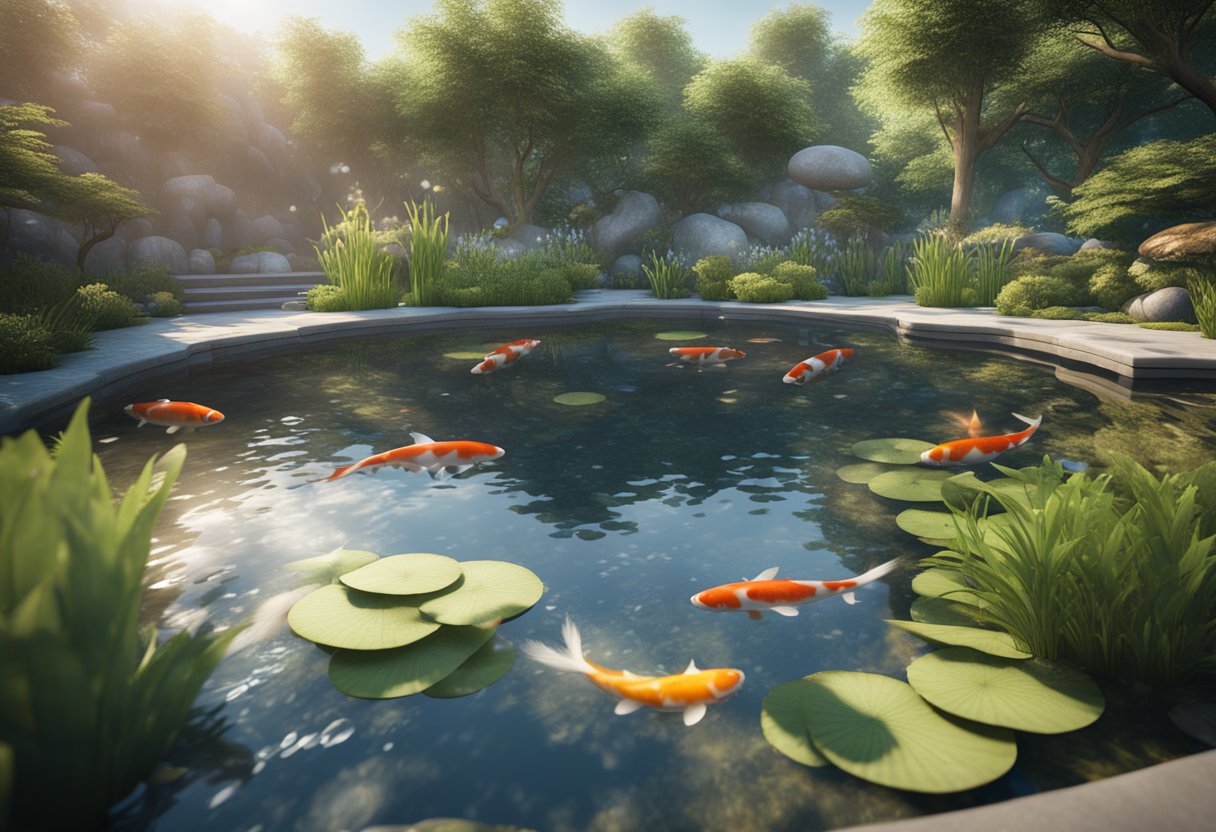
| Disease | Symptoms | Causes | Treatments |
|---|---|---|---|
| Koi Herpesvirus (KHV) | Lethargy, loss of appetite, respiratory distress | Viral infection | Quarantine, supportive care |
| Spring Viremia of Carp (SVC) | Skin lesions, bleeding, organ damage | Viral infection | Minimize stress, good water quality |
| Ulcer Disease | Open sores, inflammation, redness | Bacterial infection | Water quality management, nutrition |
| Gill Disease | Labored breathing, mucus production, lethargy | Parasites, bacteria, poor water conditions | Water quality maintenance, pond cleaning |
| Parasitic Infections | Irritation, skin damage, compromised health | Various parasites | Quarantine, regular inspections |
Effective disease prevention in koi ponds involves a holistic approach, combining robust quarantine protocols, vigilant monitoring, optimal nutrition, and maintaining pristine water conditions. By implementing these proactive measures, pond owners can help ensure the long-term health and well-being of their cherished koi fish.
Creating a Healthy Pond Environment

When it comes to koi fish care, creating a healthy pond environment is of utmost importance for promoting koi fish well-being and preventing illnesses. Proper management of water quality, installation of suitable filtration systems, and maintaining the right balance of oxygen and nutrients are essential factors to consider in ensuring the optimal health of your koi. By implementing the following guidelines, you can provide a thriving habitat for your beloved koi.
Water Quality Management
Achieving and sustaining good water quality is crucial for the overall health of koi fish. Regular testing and monitoring of water parameters such as pH, ammonia, nitrite, and nitrate levels are necessary. These tests help detect imbalances and enable prompt corrective actions to maintain an optimal environment. It is essential to remove debris, excess waste, and decaying matter, as they can negatively impact water quality and lead to the development of diseases.
Filtration Systems
Investing in a reliable filtration system is fundamental for the well-being of your koi. A properly designed and maintained filtration system helps remove excess waste, toxins, and harmful substances from the pond water. It plays a vital role in maintaining water clarity and stability, reducing the risk of diseases caused by poor water quality. When selecting a filtration system, consider the size of your pond, the number of koi, and the specific filtration requirements.
Oxygen and Nutrient Balance
Ensuring an adequate supply of oxygen and a balanced nutrient level is crucial for koi fish care. Proper oxygenation stimulates their metabolism and improves their overall health. An oxygen-rich environment supports the growth and vitality of your koi, reducing the risk of diseases. Additionally, maintaining a balanced nutrient level is essential to prevent excessive algae growth, which can deplete oxygen levels in the pond.
By following these koi fish care guidelines and prioritizing the creation of a healthy pond environment, you will not only promote the well-being of your koi fish but also significantly reduce the risk of illnesses. Remember, a well-maintained pond provides a sanctuary for your koi to thrive and flourish.
Quarantine Measures for New Koi
Quarantining new koi fish before introducing them to the main pond is crucial for koi disease prevention and maintaining the overall health of your pond. This practice helps to prevent the spread of potential illnesses and ensures that new koi are acclimated properly to their new environment. Setting up a dedicated quarantine tank and following proper quarantine procedures are key steps in this process.
Setting Up a Quarantine Tank
When setting up a quarantine tank, it is important to consider the size and filtration system. The tank should be large enough to provide adequate space for the koi fish to move around comfortably. A filtration system is essential for maintaining water quality and removing waste products. Additionally, ensure that the water temperature and pH levels are appropriate for the health of the koi.
Performing Proper Quarantine Procedures
During the quarantine period, it is essential to closely monitor the health of the new koi fish. Look for any signs of illness such as abnormal behavior, changes in appetite, or physical abnormalities. If any issues are detected, consult with a professional or an experienced koi keeper for proper diagnosis and treatment options.
It is also best to quarantine new koi fish for a minimum of four weeks to allow for any potential diseases to manifest. During this time, observe the fish for any symptoms and carry out regular water testing to ensure optimal water quality. Additionally, avoid introducing any new fish to the quarantine tank during this period to prevent cross-contamination.
Monitoring the Health of New Koi Arrivals
Regularly assess the overall health of the new koi arrivals and consider a transition period before introducing them to the main pond. This approach helps the koi gradually adjust to their new habitat, minimizing stress and potential disease transmission. Observe the koi fish closely, paying attention to their feeding behavior, swimming patterns, and overall appearance.
By implementing proper quarantine measures, koi keepers can reduce the risk of introducing diseases to the main pond and maintain the health and well-being of their koi fish.
Healthy Diet and Nutrition for Koi
A balanced and nutritious diet plays a crucial role in promoting the overall well-being and health of koi fish. Providing the right types of food in proper quantities, along with suitable feeding schedules and the incorporation of immune-boosting supplements, can significantly enhance the vitality and longevity of these beautiful pond inhabitants.
When it comes to feeding koi fish, it is important to offer a diverse range of high-quality food options. **Koi health tips** recommend a combination of both dry and live food sources to ensure optimal nutrition. Dry pellets specifically formulated for koi provide a balanced diet and are readily available. These pellets contain essential nutrients such as proteins, vitamins, and minerals, necessary for the healthy growth and development of koi fish.
“A diverse and well-rounded diet should consist of a mix of pellets, freeze-dried or frozen foods, and live options such as earthworms, brine shrimp, or daphnia.”
In addition to dry pellets, koi fish greatly benefit from the inclusion of freeze-dried or frozen foods. These options enhance their diet by imitating the natural prey items that koi consume in the wild. Examples include freeze-dried krill, bloodworms, and brine shrimp. These foods are rich in essential nutrients and provide a variety of textures and flavors, enticing koi to feed and promoting a balanced intake of nutrients.
Supplementation is another essential aspect of koi health and nutrition. Adding immune-boosting supplements to their diet can help increase the resilience of koi fish and protect them from various diseases. **Promoting koi fish well-being**, these supplements often contain beneficial additives such as vitamins, probiotics, and immunostimulants. They help strengthen the koi’s immune system, improving their ability to fight off pathogens and maintain optimal health.
Feeding Schedule
Establishing a regular feeding schedule is important to prevent overfeeding and maintain good koi health. **Keeping koi fish healthy** can be achieved by following a feeding routine that matches the koi’s metabolic needs and the water temperature. During warmer months when koi fish are more active, feeding multiple times a day in smaller portions is recommended.
However, during colder months when their metabolism slows down, it is advised to reduce the frequency of feeding to help prevent digestive complications. This can be achieved by offering smaller meals less frequently, typically once a day or every other day.
The quantity of food to feed should be determined by the koi’s appetite and the water temperature. It is important to avoid overfeeding, as this can lead to water quality issues, obesity, and other health problems. Observing the fish during meal times and adjusting the quantity accordingly is key to providing the right amount of food without wastage.
| Food | Quantity (per feeding) | Feeding Frequency |
|---|---|---|
| Dry Pellets | A small handful | 2-3 times per day |
| Freeze-Dried/Frozen Foods | A pinch | 1-2 times per day |
| Supplements | As directed on packaging | 1-2 times per week |
In conclusion, maintaining a healthy diet is crucial for the overall well-being and long-term health of koi fish. By providing a varied diet, following a suitable feeding schedule, and incorporating immune-boosting supplements, koi owners can ensure the optimal nutrition and vitality of their beloved fish. By following these **koi health tips** and promoting koi fish well-being, a vibrant and thriving koi pond can be achieved.
Regular Monitoring and Maintenance
To ensure the well-being of your koi fish, regular monitoring and maintenance of your pond are crucial. By following these koi fish care guidelines, you can prevent illnesses and promote the overall well-being of your precious aquatic pets.
Water Testing
Regularly testing the water parameters of your koi pond is essential for maintaining a healthy environment. Monitor factors such as pH levels, ammonia, nitrite, nitrate, and oxygen levels. Test kits are readily available at pet stores and can help you keep track of the water conditions.
Checking for Signs of Disease
Keeping a close eye on your koi fish for any signs of illness is vital to catching diseases early on. Look out for abnormal behaviors, physical abnormalities like lesions or discoloration, changes in appetite, and excessive mucus production. If you notice anything unusual, it’s important to take immediate action.
“Regular monitoring and quick detection of diseases can significantly increase the chances of successful treatment and recovery,” says Dr. Emily Johnson, a renowned veterinarian specializing in koi health.
Addressing Water Temperature Fluctuations
Water temperature plays a crucial role in the well-being of koi fish. It’s important to monitor and maintain stable water temperatures, especially during extreme weather conditions. Consider using a pond heater or a shade cover to regulate water temperature and protect your koi from potential stress or diseases.
Maintaining Equipment
Regularly inspect and maintain your pond equipment, including filters, pumps, and aerators, to ensure optimal performance. Clean or replace filter media regularly, remove debris from the pond, and check for any leaks or malfunctions. Well-maintained equipment helps maintain water quality and reduces the risk of disease outbreaks.
By implementing these koi fish care guidelines and regularly monitoring your pond, you can prevent illnesses and promote the overall well-being of your koi fish. Remember, a healthy and well-maintained pond is the key to keeping your koi fish happy and thriving.
